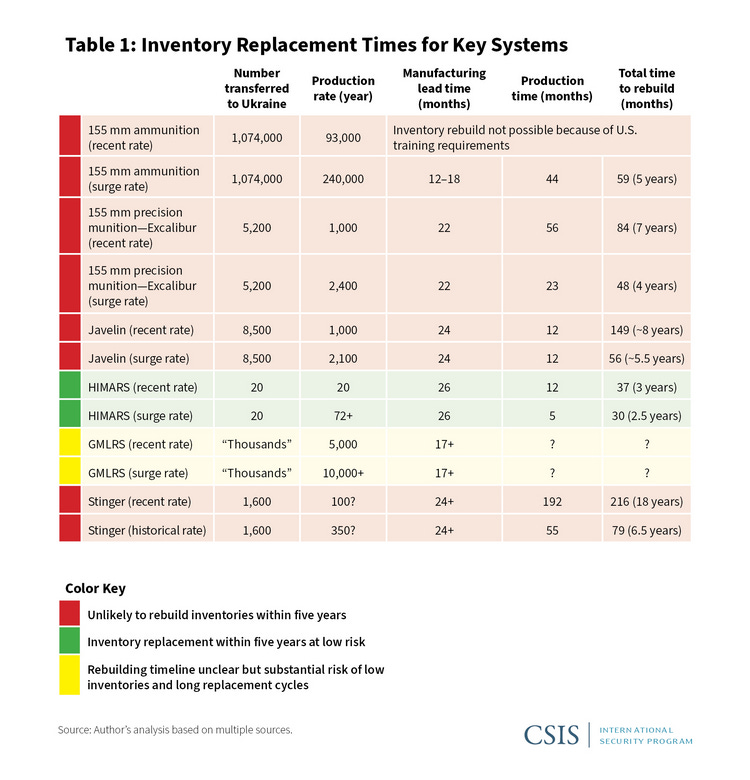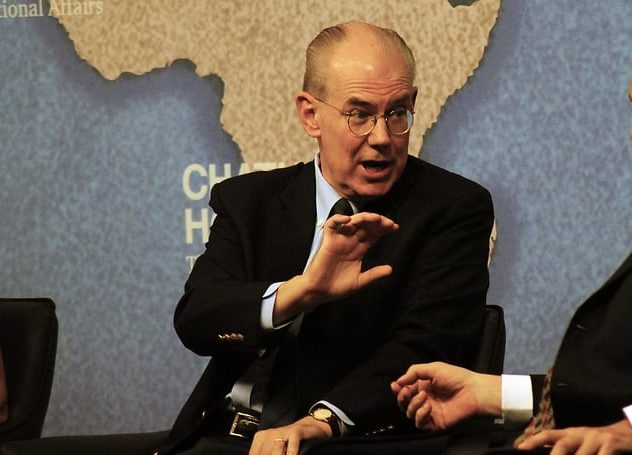The war in Ukraine has been going on for over a year and shows little signs of abating anytime soon. This is bad news for the people of Ukraine, who continue to suffer from Russian missile strikes and from their own government dragging men off the streets to send off to the front lines. It is also bad news for Americans, as our leaders wage what amounts to an openly acknowledged proxy war against the state with the largest nuclear arsenal on the planet.
If one listens to the mainstream “respectable” media and the army of pundits on social media, one could be excused for thinking that the Ukrainians are always on the cusp of victory and pushing the Russians out of occupied territory entirely. Since the war started people have harped on how Russia is supposedly on the brink of collapse, how Russian troops are deserting and surrendering en masse, how they have to use ancient Soviet weaponry, how Putin is on death’s doorstep with too many terminal diseases to count, and how he is about to surely be overthrown in a dramatic coup.
However, as Hayo Miyazaki’s Witch of the Waste tells young Michael when he remarks that “the newspaper” reports they have won a military victory: “only idiots believe what they read in the paper.”
In reality, a decisive victory is not likely by either side for the foreseeable future and ultimately the preponderance of the evidence seems to indicate that Russia will eventually emerge victorious in the conflict.
So says John Mearsheimer, the father of the offensive realist school of international relations, who predicted the current crisis all the way back in 2014 in a Foreign Affairs article provocatively titled “Why the Ukraine Crisis is the West’s Fault.” His lecture on the subject from 2015 has over 29 million views.
Mearsheimer’s arguments in this regard have been gone over ad-nauseam since the war began, with many card carrying members of the foreign policy blob establishment and the legions of crusaders for international (anti-)liberalism hissing and sputtering with rage at Mearsheimer’s heresies and failure to recognize the U.S. as being the earthly incarnation of all that is good and pure.
But now that the war has been going on for over a year, Mearsheimer has conducted a series of highly enlightening talks and interviews (to the Committee for the Republic, a lecture in Germany, and a podcast interview with Indonesian intellectual Gita Wirjawan) on how he sees the future of the war progressing. Ultimately, he concludes that there is basically no chance for a diplomatic solution to the conflict, that when the active fighting does stop it will be in the form of a cease-fire like that which exists between the North and South Korea along the 49th parallel, and that ultimately, Russia will be victorious. By victorious he means that he suspects that eventually the Russians will succeed in securing the four oblasts it has already annexed since the war began and that he believes that if they are militarily capable of doing so they will take an additional four oblasts including Odessa and Kharkiv and turn what remains of Ukraine into a dysfunctional rump state.
It is important to note that Mearsheimer is not engaging in value judgement in these predictions. Rather, he is trying to dispassionately and logically explain what he thinks will happen and why (ideally so that policy makers could adjust their conduct accordingly, but he is not optimistic that will happen).
Mearsheimer bases his arguments on the fact that there is not any maneuver warfare taking place and that we should not expect either side to engage in any blitzkriegs anytime soon. Rather, this war is more reminiscent of the Great War, where both sides are dug in and engaged in a long and brutal war of attrition. (I would note that Mearsheimer has the credentials to speak on this, as his first book, which is an interesting and easy to understand read, Conventional Deterrence, explores at length the difference between blitzkrieg and attrition warfare.)
It is from this reality that Mearsheimer draws his conclusion that Russia will likely “win” the war. Three variables are key when analyzing a war of attrition, which Mearsheimer routinely refers to as a slug fest where two boxers are standing toe to toe and beating the living day-lights out of each other. These variables are the balance of population, the balance of artillery, and the balance of resolve.
Balance of Population
Regarding the balance of population, Mearsheimer estimates that before the war started there were 3.5 Russians for every Ukrainian (which counts the inhabitants of the rebelling Donbas as Ukrainians) but now he estimates there are 5 Russians for every Ukrainian. 8 or 9 million Ukrainians have left Ukraine, and around 3 million of them have moved to Russia. Obviously this does not bode well in a war of attrition where the strategy amounts to grinding the other side down and explains why Ukraine is sending 60 year old men off to the front.
Balance of Artillery
Things look even worse for the Ukrainians when it comes to the balance of artillery. Mearsheimer estimates that the Russians outgun the Ukrainians by a ratio between five and 10 to one.
Anyone who has followed the war closely will not be surprised by this estimate. Pre-war Ukraine’s artillery was in the Soviet caliber of 152mm. Its stock of 152mm ammo was rapidly depleted at the start of the war, rendering these guns useless. There has been a trickle of 152mm shells from old Warsaw Pact stockpiles and some small amount of new production, but Ukraine has mostly had to rely on various artillery pieces from the west that are chambered for the standard NATO 155mm shell.
However, the West, and especially the U.S., does not have vast stockpiles of artillery shells. Rather, American strategy has emphasized air power, which is fine if one is bombing Taliban fighters in their Toyota Hilux, but not so great when facing enemies with integrated air defenses.
As a result, the west has been scrounging around the world to try and scrape together 155mm shells to send to Ukraine. Since the war began, the U.S. has “committed” (meaning some of this aid won’t reach Ukraine for months or even years) 2 million rounds of 155mm shells and 160 howitzers to Ukraine.
However, according to a recent CSIS report, the U.S. is only capable of producing 93,000 155mm shells a year, the entirety of which is used for U.S. training exercises. Once production is “surged” the U.S. will be able to produce 240,000 shells per year. At the time the report was authored, the U.S. had committed 1,074,000 shells to Ukraine and it was estimated it would take 5 years of surge capacity to replace them. Now that the U.S. has committed an additional 1 million shells, it will presumably take 10 years to do so.

This is why the U.S. is so desperate to find shells. The leaked Pentagon documents revealed that the U.S. was pressuring South Korea to export 330,000 shells to Ukraine, in violation of its own rules against providing lethal aid. There was also a report that South Korea had agreed to “loan” the U.S. 500,000 shells.
However, the reality is that even if the South Koreans provided a million shells, Ukraine would still be vastly outgunned.
We now see that this is being openly admitted to by the West, with Biden flat out saying Ukraine and the West don’t have the shells as a justification for sending cluster munitions to Ukraine.
For perspective, a recently released report from the Royal United Services Institute estimates that Russia fired 12 million shells in 2022, and that the Ukrainian military estimates Russia will fire 7 million in 2023. Furthermore, Russia is capable of producing 2.5 million shells a year (not counting imports from places like North Korea and Iran).
In Mearsheimer’s words, Russia’s domestic armaments industry is designed to fight World War I, which is good news for them given the nature of this conflict.
By any measure, Ukraine is vastly outgunned. This then leads to Mearsheimer’s estimate that the casualty exchange ratio amounts to at a minimum 2 Ukrainians perishing for every 1 Russian.
In a war where the goal is to grind down the other side into dust, this does not bode well for Ukraine.

(A side note on the controversial cluster munitions: both the Russians and the Ukranians are using PFM-1 (butterfly) anti-personnel mines that are deployed and scattered completely unmapped via air-burst artillery rounds or aircraft. I do not support sending any military equipment to Ukraine, let alone cluster munitions, but the reality is that eastern Ukraine is riddled with mines at this point and I suspect that unexploded cluster bomblets will make little difference in the balance of the post-war suffering that is rapidly accumulating.)
Balance of Resolve
This leaves the balance of resolve. Ukraine, or at least the Ukrainian state and a large amount of the population, is obviously highly motivated to fight. Ukraine was invaded, after all, and the war amounts to a struggle for national survival. People often point to this as being a factor in Ukraine’s favor. However, Mearsheimer points out that Russia also obviously views itself as fighting an existential war of survival.
This claim may be jarring to those who have been imbibing (anti-)liberal international kool aid that maintains that Putin is simply Hitler incarnate and waging a war of aggression for the fun of it and to appease his maniacal ego.
Mearsheimer says there is simply no evidence to back up these assertions and reiterates the causes of the war he laid out back in 2014. He also notes that the West, especially the U.S., has maximalist aims against Russia in this war. The U.S. is backing Ukraine not only for Ukraine to reclaim its territory, but to destabilize Russia, destroy its economy, arrest and try Putin for war crimes, and on the more radical end of things break up Russia itself.
Obviously, under such conditions, Russia has just as much motivation to carry on this fight as Ukraine does. It is worth noting that when the USSR was existentially threatened during the Second World War the country sustained an incomprehensible 27 million dead, but still carried on the fight.
What Does the Future Hold?
Mearsheimer is rather pessimistic about where things will go from here. He points out that the U.S. has a long track record of doubling down on disastrous foreign policy misadventures, pointing to Vietnam and more recently the 20 year pointless mess in Afghanistan.
Mearsheimer does not believe that a diplomatic solution to the war in Ukraine is possible (and scoffs at Donald Trump’s boast that he would end the conflict in 24 hours) because there is simply no room for compromise between the two camps. By annexing four Ukrainian oblasts, Russia has declared that they are part of Russia itself. Russia will not willingly hand over what it considers to be sovereign territory. Similarly, Ukraine has been explicit that it will not settle for anything less than a return to pre-war borders, and a return of Crimea (snapped up by Russia in 2014) to boot. These are both maximalist aims and now that rapid hyper-nationalism has set in among both Russians and Ukrainians the respective leadership of both countries would likely be unable to compromise, even if they wanted to, because of pressure from citizens (especially the Nazi-insignia wearing far-right in Ukraine).
He also notes that there is a great deal of danger regarding the potential for nuclear escalation. He points out that, paradoxically, the more the West succeeds in its proxy war against Russia, the more likely Russia is to use a tactical nuclear weapon to signal to the West that it needs to back off. He is optimistic that Western leaders would immediately scramble to make peace, but given the insane religious fervor that has gripped the West when it comes to this war, and the way in which even normally sensible people have said that “we can’t let Russia use nuclear blackmail against us” one must wonder in the back of one’s mind if this situation could spiral out of control in a way that would dwarf all previous catastrophes that have befallen mankind.
Mearsheimer is clear that he might be wrong about the course of the war, and indeed says that he hopes he is. The future is radically uncertain so only time will tell.
This article was originally featured at Zachary Yost’s substack The Yost Post and is republished with permission.































